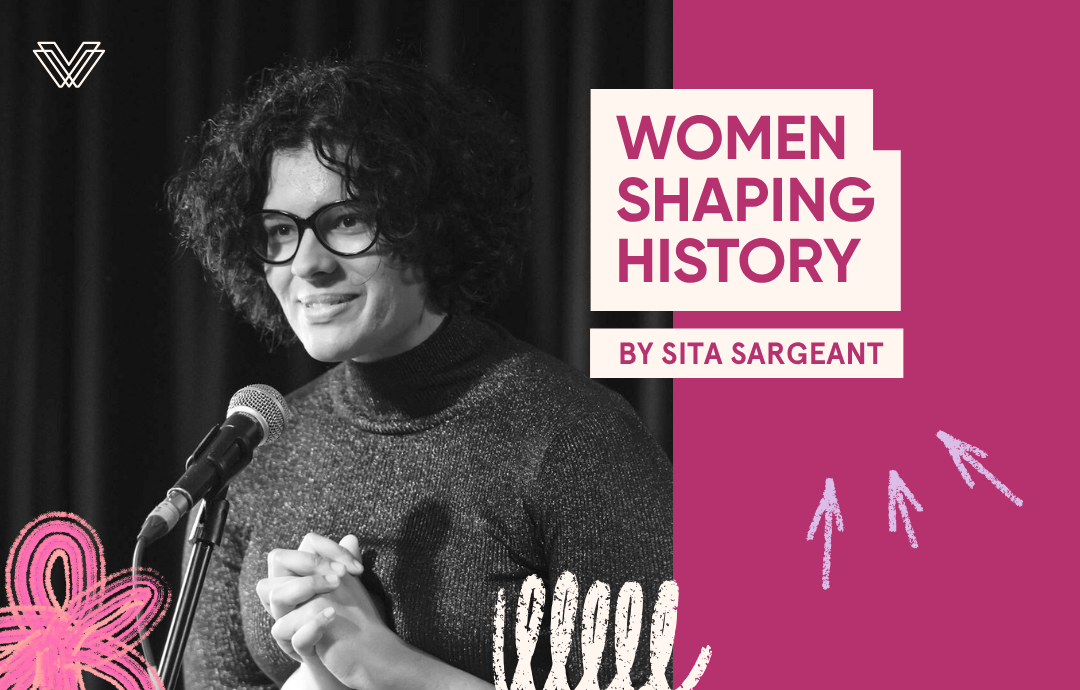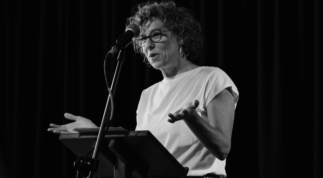The following is a transcript of a speech delivered by Sita Sargeant, Founder of She Shapes History Walking Tours, at the Trust’s 40th Birthday celebration on 12 October 2025.
When I think about what it means to shape history, I don’t picture statues or prime ministers. I think about structures and systems, which is how you know I was raised by two public servants in Canberra.
I think about who builds them, who they’re built for, and who they leave out. Most of all, I think about how to build systems that last.
It’s early days for She Shapes History, but I think about this constantly: how do you build something bigger than you, strong enough to grow, to make space for others, and still be here in forty years?
The Victorian Women’s Trust is a masterclass in that art. It shows that lasting change comes from smart, values-driven system design, from building structures that share power and endure beyond any one person or moment.
When the Trust was founded in 1985, it redefined what institutional power could look like. But it didn’t emerge from a vacuum. It stood on more than a century of feminist struggle, from the campaign for the vote to the reforms of the 1970s.
By the early 1980s, laws had shifted, wages improved, and doors once closed were beginning to crack open. Admittedly these gains were uneven. Many reforms failed to address the distinct needs of Aboriginal, migrant, queer and gender-diverse people, who, in response, built their own systems of care, advocacy and survival outside the official ones.
The Trust inherited both the progress and the exclusions of that era, and its challenge, then and now, is to keep widening who the structure holds and to use its influence to encourage other institutions to do the same.
That work began in a state where two forces were reshaping power at once: the machinery of government from the inside, and the architecture of activism from the outside.
Inside government, Premier John Cain did something no Australian premier had done before: he brought women’s affairs into the Premier’s office, putting gender equality at the centre of decision-making. He expanded access to childcare and made Victoria the first state to outlaw sexual harassment, writing it into the Equal Opportunity Act.
Meanwhile, outside parliament, women and gender-diverse communities were designing their own feminist structures.
Across Victoria, from women’s refuges founded in suburban living rooms to community health collectives, childcare cooperatives and Aboriginal women’s organisations, new systems of care and advocacy were taking shape.
Factory lunchrooms became classrooms, and collective care became the organising principle. Migrant, Aboriginal and queer communities built spaces for language, health, pride and leadership. These were structures designed to hold the people the official ones left out.
What emerged was this dual architecture of change: the scaffolding of reform on the inside, and the ongoing activism on the outside. The Victorian Women’s Trust became the bridge between them, translating grassroots ideas into institutional design and embedding community innovations and values into structures built to last.
In doing so, it revealed three lessons in feminist design in how to build systems that endure.
First: build independence into the model. In 1982, the women of Victoria were promised a million dollars “in recognition of their contribution.” At first, the plan was a women’s centre. But the money couldn’t stretch that far, so they got creative and built a women’s trust fund.
With Joan Kirner and her allies pushing hard in caucus, and an Implementation Committee insisting on an all-female board, the Victorian Women’s Trust was established in 1985.
Instead of bricks and mortar, they built an endowment, a pool of capital that would generate income for women’s priorities year after year.
That decision gave the Trust its first design advantage: structural and financial independence. Over the 1990s the Trust moved towards self-sufficiency, becoming increasingly able to speak boldly, act politically and set its own agenda. It showed that if you want a structure to last, it needs its own engine, a source of power that supports self-sustainability.
Second: redesign the systems that hold power. In the late 1980s, the Trust launched a Guaranteed Loan Fund that helped banks change their lending policies and extend credit to women in their own names, no husband or co-signer required. It didn’t just help individual borrowers; it rewired part of the financial system. That’s what enduring structures do: they don’t simply adapt to the rules, they actively change them.
Third: make visibility part of the architecture. In 1991, the Trust backed Completing the Picture: The Lost Women of the Heidelberg Era, an exhibition that drew more than 100,000 visitors and reshaped not only awareness but the market value of women artists in Victoria. Then came the Ewa Czajor Memorial Award and Ordinary Women, Extraordinary Lives, projects that made women’s work visible, recognised and respected. It changed who was seen, who was heard, who was valued, and who got to belong.
Together, these three principles — independence, redesign and visibility — show what it takes to build something that lasts: give it its own power source, build it to reshape its surroundings, and make it visible enough to keep mattering.
The Victorian Women’s Trust showed us that when women design the system themselves, change doesn’t just happen, it holds.
 Sita Sargeant is a tour guide, feminist, history enthusiast, and founder of She Shapes History, a historical tourism company and social enterprise focused on closing the gender respect gap. Through walking tours, digital content, and a podcast, She Shapes History shares the inspiring, unexpected, and often overlooked stories of how women have shaped the places we live, work, and visit. In 2025, she published her first book She Shapes History: Walks & Stories About Great Australian Women (Hardie Grant).
Sita Sargeant is a tour guide, feminist, history enthusiast, and founder of She Shapes History, a historical tourism company and social enterprise focused on closing the gender respect gap. Through walking tours, digital content, and a podcast, She Shapes History shares the inspiring, unexpected, and often overlooked stories of how women have shaped the places we live, work, and visit. In 2025, she published her first book She Shapes History: Walks & Stories About Great Australian Women (Hardie Grant).



